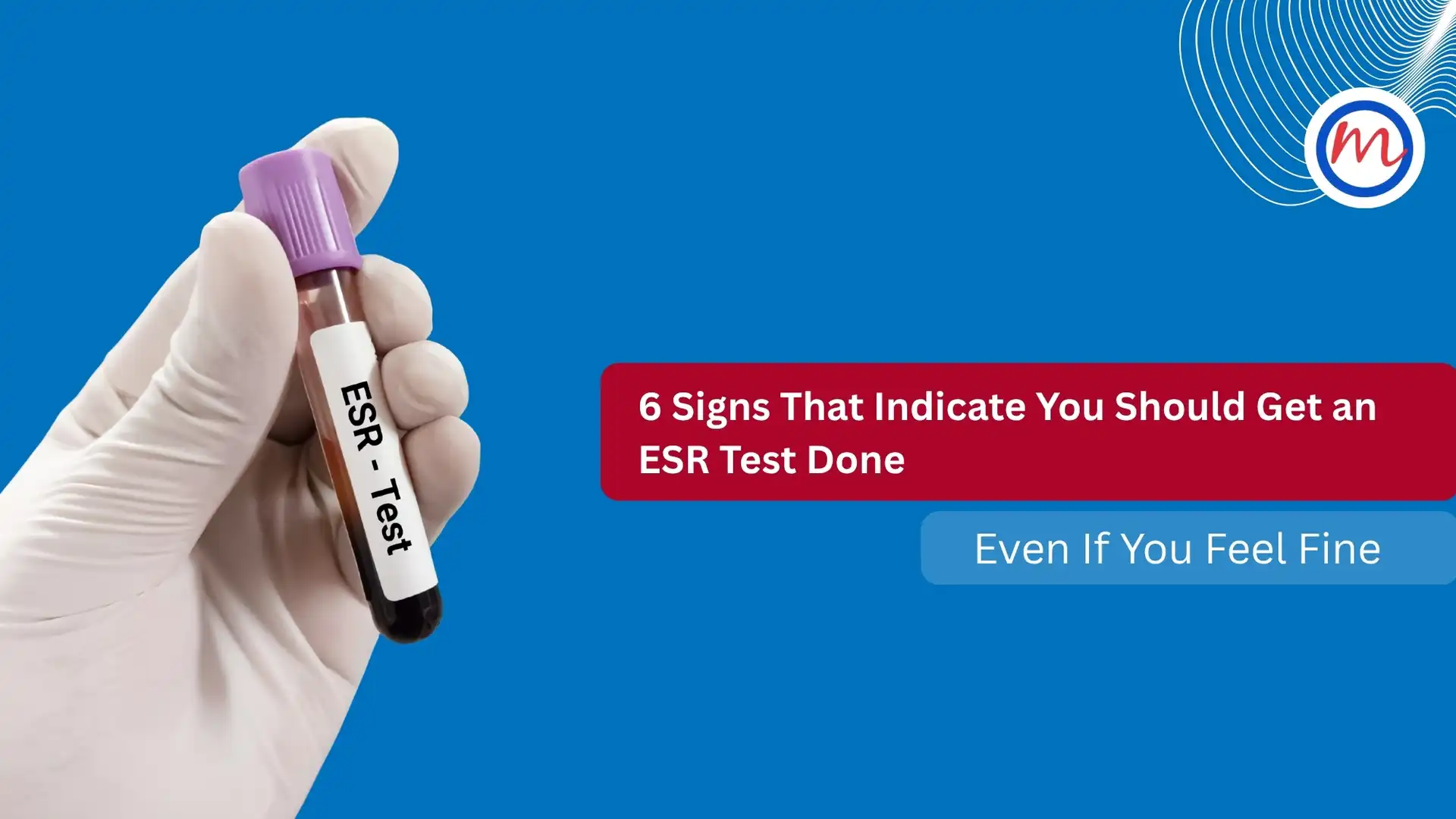6 Signs That Indicate You Should Get an ESR Test Done – Even If You Feel Fine
Have you ever been told to take an ESR test and wondered why, especially when you don’t have any obvious symptoms?
Erythrocyte Sedimentation Rate (ESR) is a simple blood test that measures the rate at which your red blood cells settle in a test tube. It may sound basic, but it gives powerful insights into hidden inflammation or infection in your body.
For people with diabetes, ESR can act as an early warning signal, detecting silent infections, inflammatory responses, or complications before symptoms become serious.
Here are 6 signs or situations when you should consider getting an ESR test, even if you are feeling completely normal.
-
You Have Diabetes and Keep Catching Infections
Recurring boils, foot ulcers, or urinary tract infections? ESR helps doctors identify chronic low-grade infections that aren’t resolving with treatment.
A raised ESR can signal that your body is still battling inflammation, even if symptoms are mild.
-
You are Experiencing Unexplained Fatigue or Weight Loss
If you feel unusually tired, weak, or notice unintended weight loss, it might be due to underlying inflammation, not just your sugar levels.
ESR gives clues when something deeper may be going on inside your body.
-
You Have Joint Pain or Stiffness
Diabetes increases the risk of joint and connective tissue disorders. If you have persistent joint pain or stiffness, especially in the mornings, an elevated ESR could suggest:
- Rheumatoid arthritis
- Lupus
- Other inflammatory conditions
ESR helps differentiate between mechanical pain and inflammatory causes.
-
You are Recovering from a Recent Infection
After an illness like COVID-19, pneumonia, or a severe UTI, ESR can help track how well your body is recovering and whether the inflammation has truly settled.
A falling ESR after treatment is a good sign of healing.
-
Your Doctor Is Monitoring an Ongoing Condition
If you have been diagnosed with any autoimmune disorder or infection, your doctor may use ESR as a tracker test to monitor progress or flare-ups.
ESR trends over time can help guide treatment decisions.
-
You Have No Symptoms, But Your Doctor Suspects Something
ESR is often used as a screening test when the cause of symptoms is unclear, such as low-grade fever, muscle pain, or general malaise.
A high ESR doesn’t diagnose a specific disease, but it tells doctors to look deeper.
What’s a Normal ESR Level?
| Age Group | Normal ESR (mm/hr) |
| Men under 50 | 0 – 15 |
| Women under 50 | 0 – 20 |
| Older adults | Up to 30 (can vary) |
Take Inflammation Seriously
At Dr. Mohan’s Diabetes Specialities Centre, ESR testing is included in advanced diabetes care packages to help detect infections, autoimmune conditions or silent inflammation that may worsen diabetes outcomes.
Visit us for more: https://drmohans.com/lab/
Book your health package now: https://drmohansdiabetes.co.in/dmdsc_packages/?package=DMD1504



